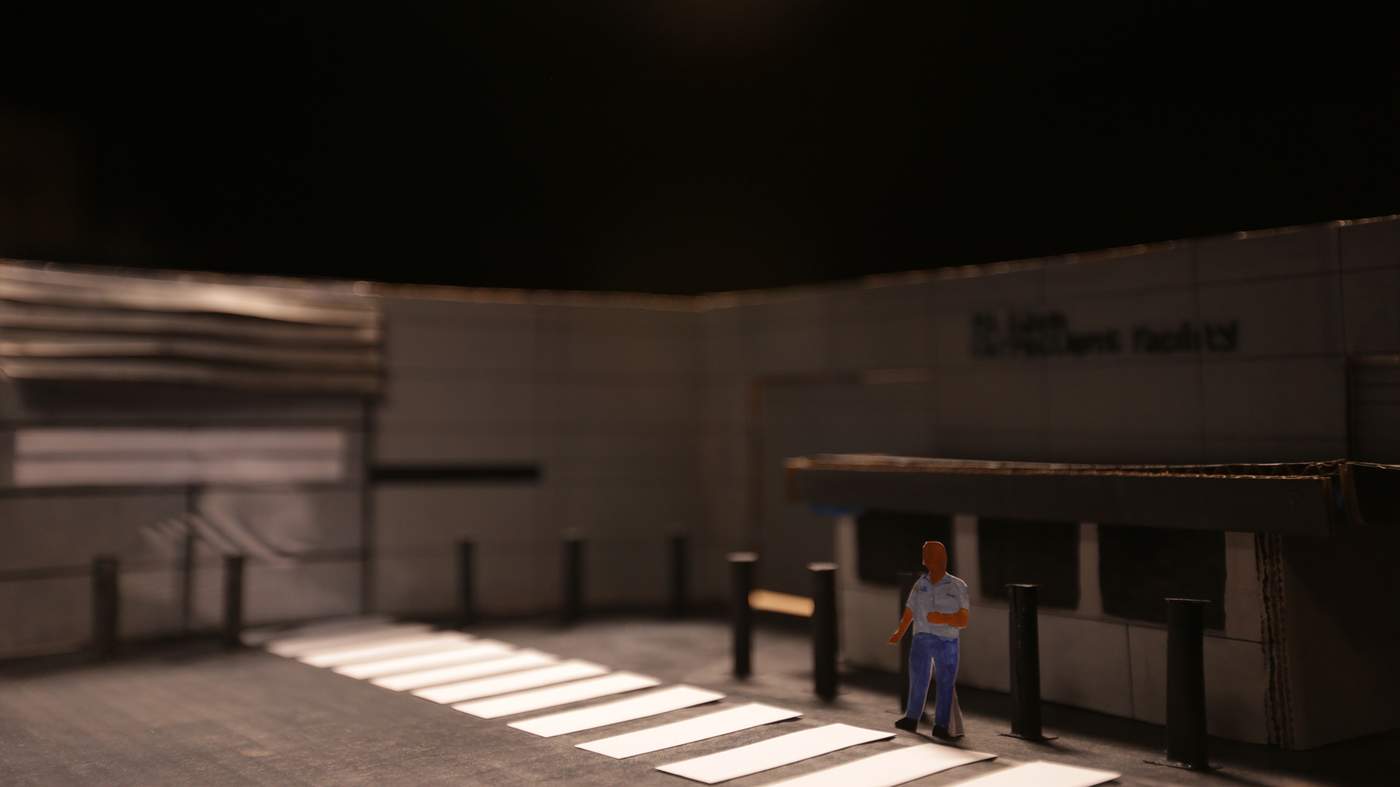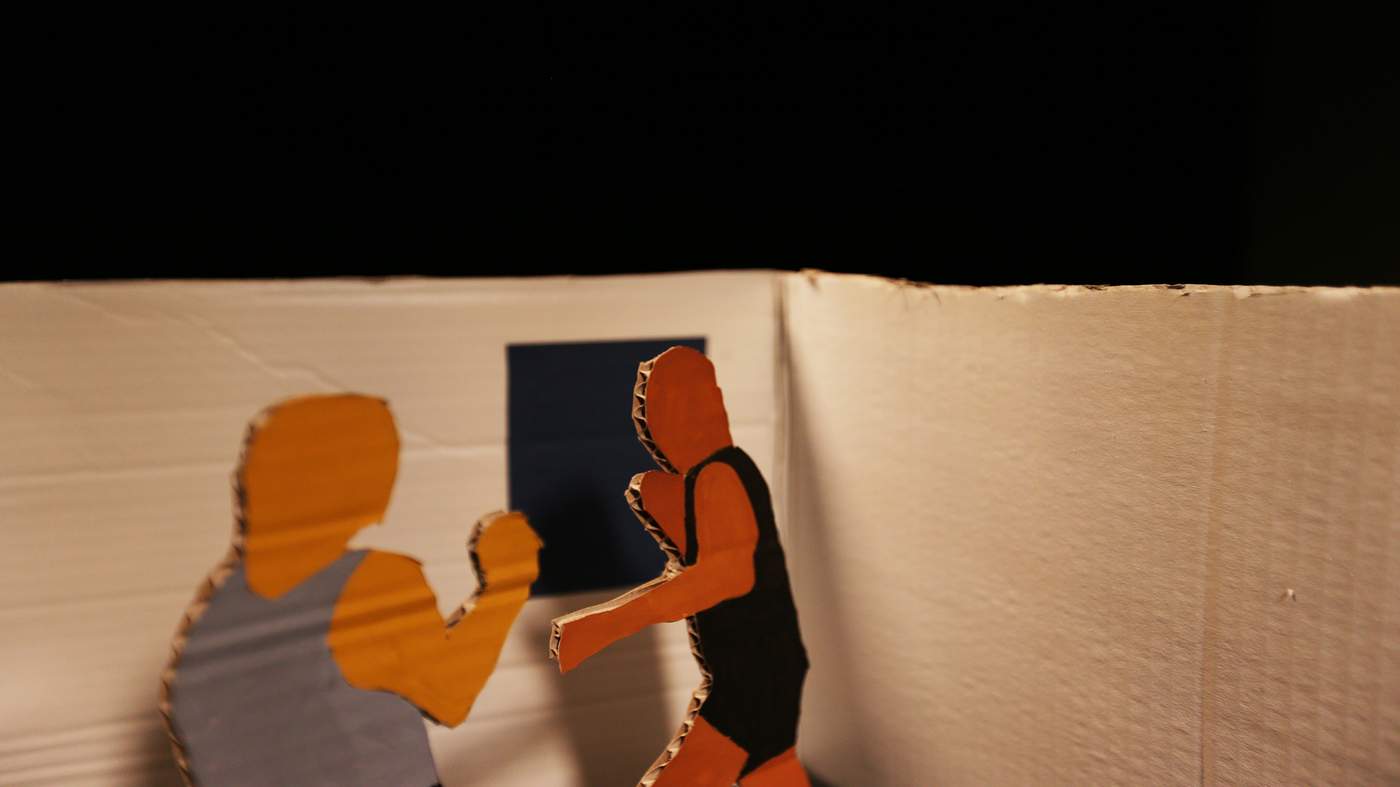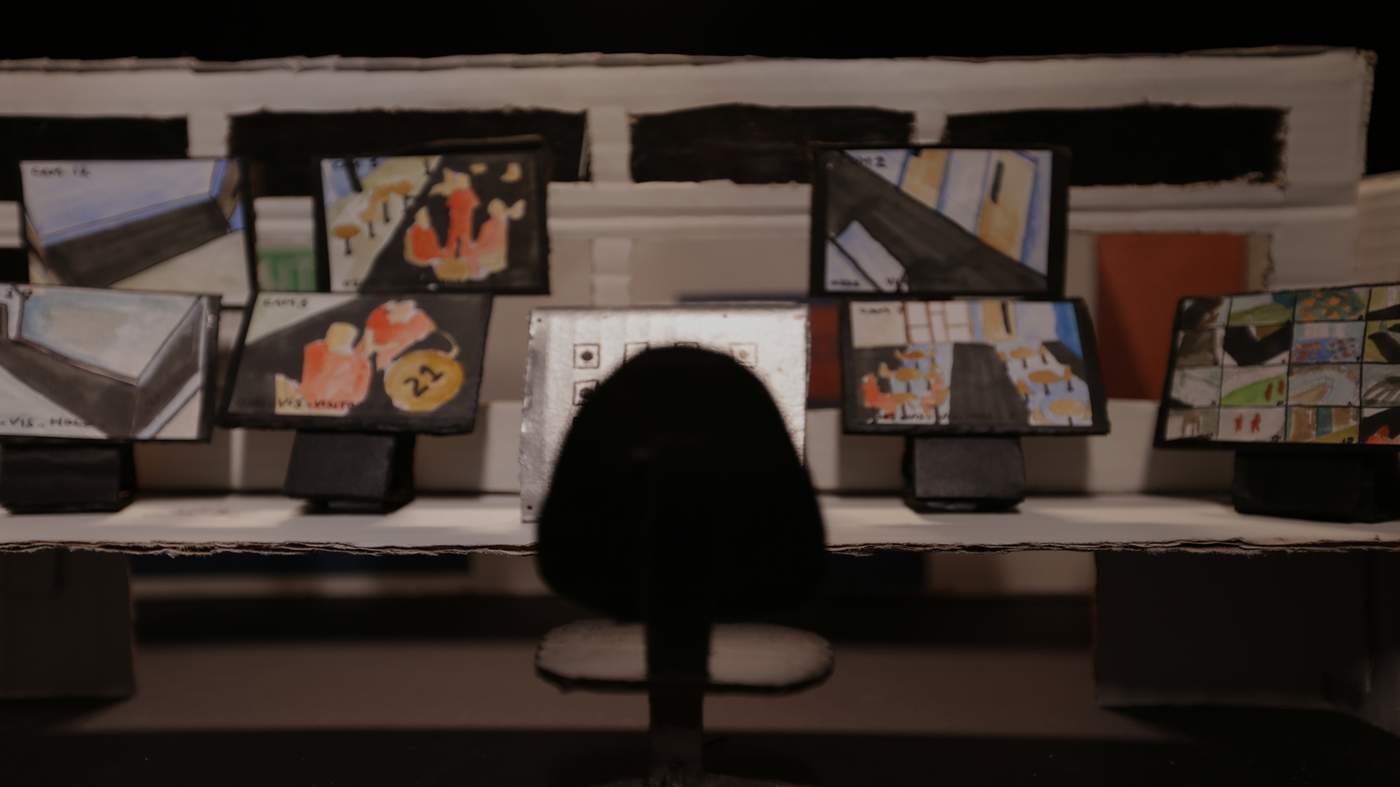The month that marked the beginning of the end for private prison operator Serco’s management of Mt Eden prison started with smiles.
On the front cover of the staff magazine “MENU” (Mt Eden News Update) for July 2015 is a photo of two Serco staff members beaming as they stand alongside actor Sam Neill and director Taika Waititi, of the movie Hunt for the Wilderpeople.
The film crew had been allowed on prison grounds for a scene from the movie where Neil’s character ends up in jail.
The star-struck smiles capture a happy time.
Inside the magazine, the prison director praises his staff for their work and notes Mt Eden sits at the top of the Prison Performance Table - a position on the Government’s prison league table it has held for more than a year.
“I have every confidence that the next half of 2015 will be even more successful than the last half.”
It’s like looking back at the Titanic captain’s log from the moment immediately before the iceberg shredded the hull.
The ink on MENU was barely dry before Serco Mt Eden was sunk.
What unfolded was the biggest scandal in the prison system for years, a bloodletting that has not ended even now, almost 18 months later.
The prison director who wrote those foreboding words was Gareth Sands. He’s kept his silence until now.
For the past few months, Sands has been talking to Stuff Circuit about what happened on his watch. It has not been easy. Even though he no longer works for the company, contractual obligations restrict what he can say. And if there’s one thing about Gareth Sands it’s that he would rather spend a month in solitary confinement than breach an obligation.
Even though Sands is currently unemployed - he prefers to call it a career break - he continues to refer to himself as a public servant, and abide by the public service tenets of integrity and transparency.
He’s careful to avoid, too, ripping into the prison system - he’s spent 20 years working in correctional facilities here and in the UK and wants to continue doing so. Not just for his own sake, he’s driven to being a part of making the system better.
Sands also remains loyal to his former employers, though, don’t get him wrong, he has grievances - he’s taking Serco to court for unjustified dismissal, believing that he was unfairly cut adrift.
Almost worse, to him, is that from early on after the Fight Club scandal broke his former bosses “ceased to engage” - nobody wanted to know what he thought, or learn from what he’d observed.
He’s chosen to share those thoughts with us - and to face the tough questions which need to be asked.
On the day the Mt Eden Prison Fight Club became a notorious chapter in New Zealand’s prison history, Gareth Sands was out of the country on leave. It was July 2015.
“I got a phone call and an email and as most of New Zealand did I looked online,” he says.
What he saw was a series of YouTube clips showing prisoners fighting each other at his prison. They weren’t just assaults or brawls - they were organised fights filmed on cellphones and uploaded to the internet. At least two of the biggest prison rules - violence and possession of contraband - flagrantly flouted in one go.
“I got on a plane and flew back into the country and walked into collective hysteria around what was going on. I understood the images and the images made my stomach turn.”
''The images made my stomach turn.''
Challenged about how long the fights go on for, how audacious the prisoners are, Sands concedes: “Whether they’re a short period of time or a long period of time violence is unacceptable and that should not have happened. It did happen, and it happened on my watch.”
And further, as if to emphasise that he’s not ducking anything: “It was a very challenging environment, very challenging contract, very challenging operationally, the client group, the prisoners, were very difficult, it was a very ambitious contract there’s no two ways around that. But I was responsible for running it and I was in charge when it happened.”
He provides some context, listing the facts that there are 650 cells, about 1000 prisoners unlocked for seven to eight hours a day, and that cells do not have CCTV coverage.
“I’m a corrections officer on a unit and there’s one or two of us and there’s 50 prisoners and it’s a remand setting and we’re busy and we’re moving people at very short notice - sometimes planned, sometimes unplanned - and we're taking people to visit and programmes...these are not excuses these are just operational logistical challenges that are day in, day out.”
And there it is, we come to the crunch of the Fight Club blame game: staffing.
First, what was actually going on in those bouts?
To save you watching them again, we have.
All up there were six known clips uploaded to YouTube, between June 16-July 4 last year.
Even in an age of UFC and Game of Thrones massacre scenes, they are confronting.
Most of them are filmed in cells, two contenders bashing each other as a crowd stands around.
As unruly as it is, you have to say that there is a certain order - besides shouting, bystanders do not join in, this is man on man. In one fight, there is a referee.
And of course, there is a cameraman, usually providing a running commentary or advice.
“Don’t hold back, don’t hold back, rip his head,” says one. After about 45 seconds of that bout, one opponent goes down.
The next immediately steps up to fight the champion. But after 30 seconds, the fresh fighter has gone down. “You got him, you got him!”
In perhaps the most widely-viewed clip (it’s hard to find out exactly how many, since most clips have been ripped off and posted on many channels, many websites), a shirtless fighter with a Black Power patch tattooed on his back overpowers his opponent with hammer-fisted rights and lefts. With one particularly powerful crack to the head, his opponent goes down for the last time. “Yeah, that’s us,” says the man holding the camera.
Another popular clip sees fighters from two opposing gangs engage in a kick-boxing bout in an exercise yard. Blood streams from one of their noses, but the fight goes on. At least six inmates watch on, jumping excitedly, screaming encouragement. “Use your knees, try and knock him out!”
After several minutes, the bloody-nosed contender crumples into the corner. Rules prevail: “Let him up, let him up.”
the bloody-nosed contender crumples into the corner
But the fight is over.
Stuff Circuit identified one of the men from the footage. Looking back through his social media presence, not so many years ago he was enjoying a good career and what looks like an ordinary life.
And, then, something changes.
Tattoos indicate a connection with a gang. He goes offline. An old friend describes him now this way: “That guy is pretty frickin crazy, on the gear, scary and untrustworthy.” Attempts to find him go nowhere. Perhaps he’s back inside.

Within two days of the Fight Club footage hitting the news, the Chief Inspector of Prisons - an internal investigative entity within Department of Corrections - was ordered to find out what was going on.
In all, 12 confirmed instances of sparring and five “contender fights” were identified over the period between 11 June and 13 July. They were happening across the prison, but most within the notorious Delta Unit.
The most sickening finding was that some prisoners were compelled to take part. “Prisoners reported that if they refused to participate they would be threatened, pack attacked, or assaulted by senior members of the Killer Beez, Head Hunters, Black Power or other gangs who were involved in organising the fights,” said the Chief Inspector’s report.
In one case, a staff member was seen in CCTV footage taking part in sparring with inmates, but there was no other concrete evidence of staff involvement. “Most of the staff interviewed indicated that they had some anecdotal knowledge about organised fighting but none acknowledged witnessing it first-hand.”
So if fighting was happening at least once a week, across at least five units of the prison, why didn’t staff know more?
Since the scandal broke, and since the report came out, Corrections chief executive Ray Smith has consistently blamed staffing levels at the privately-run prison for the fight clubs.
But the man who was actually running the prison has never had a chance to say what he thinks. So, Gareth Sands, were there enough staff?
“It’s not a straightforward yes or no. I’ve always wanted more resource wherever I’ve worked but when you sign up to something you make it work as best you can. It would have benefited from more human beings in the building.”
And that was something Sands says he was trying to achieve.
When Serco took over the prison in 2011 with a 10-year fixed contract worth $320 million, there were 277 staff. By the time Sands left, he and his predecessor had lifted the staff number to 330.
And, yet, he still wanted more. He sought to introduce a movements group - freeing up staff to help move prisoners around without taking unit staff off their posts - and put in proposals for other positions.
“I worked tirelessly to try and invest in a staffing model that was affordable. Let’s remember that this staffing model and contract was accepted by the New Zealand Government.
“I’ve run state sector prisons and I’ve run private sector prisons, I understand how this works. But if you buy a model, don’t expect the next day that it’s going to look radically different to what you’ve bought. My responsibility was to improve it and that’s exactly what I did. From the moment I started to the moment I was removed from post.”
When the report into the investigation of what happened at Mt Eden emerged, a few particular points got attention. Sands is keen to confront all of them.
One was that staff who had resigned were still on the roster, thereby falsely inflating staff numbers. Sands describes this as an administrative error.
“I’m not here to make excuses and don’t know detail but I would say that a very competent person who was working the rosters day in and day out made a mistake.”
He has a similar reaction to allegations that Serco was under-reporting assaults.
He dismisses them as mistakes and points out how much over-sight the prison had - from department monitors, the Ombudsman, United Nations inspections to legal visits.
“There’s a lot of scrutiny on the site and then we’re audited on our figures and there are two mistakes there.”
So they are mistakes, not a strategy to under-report? “I welcome the question. And it’s a no.”
Perhaps the most headline-grabbing allegation in the report was that staff were playing pool and table tennis while the fight clubs were happening.
He points out, though, that the report is missing detail and that, as a prison manager he expected his staff to do this as part of the interaction with prisoners.
“If in isolation you walk on the unit and play pool and then walk off again, that’s not acceptable, but I don’t know the ins and outs.
“It’s a great headline, but I have played table tennis in [Mt Eden] with prisoners.”
If you sense that Sands is defensive, you’re right, although he prefers to call it a righteous sense of anger. He’s not out for revenge.
But there’s a very clear sense that he wants to set the record straight, and to defend his staff who he feels have been flamed in the inferno that broke out last July.
Put to him a quote from Ray Smith that his team was “willy nilly” and Sands flares up.
“My team was committed, dedicated, hard working. They operated with massive integrity, they made mistakes, they were imperfect...they were ambitious, passionate, enthusiastic. They were human beings,” he says.
It’s the same sentiment he was expressing way back in the staff magazine back in July 2015, before trouble was on the horizon.
The Fight Clubs were the most publicly damaging iceberg to strike the prison system in a generation, but while everyone was staring at Mt Eden and pointing fingers at Serco, what else was going on?
While everyone was staring at Mt Eden, what else was going on?

This is part two of a six-part series examining the prison system and asking: is there a better way?






